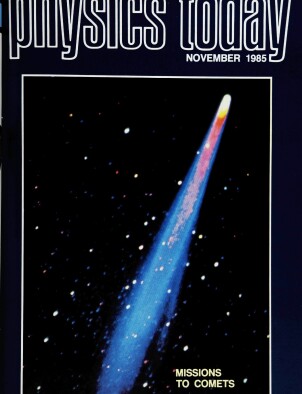Puzzling Positron Peaks Appear in Heavy‐Ion Collisions at GSI
DOI: 10.1063/1.2814764
Searching for the “sparking of the vacuum,” one of the more exotic predictions of quantum electrodynamics, two groups of heavy‐ion experimenters at the Gesellschaft für Schwerionenforschung in Darmstadt have found something quite unexpected, and very puzzling. If one had a nucleus of sufficiently high charge, Z, with a vacancy in the lowest‐lying electron orbit, it would be energetically cheaper to create an electron‐positron pair spontaneously out of the vacuum than to leave the orbit vacant. This is, in fact, the vacuum sparking—or “spontaneous positron emission”—predicted by QED. One might expect that this somewhat bizarre creation of an
This article is only available in PDF format




